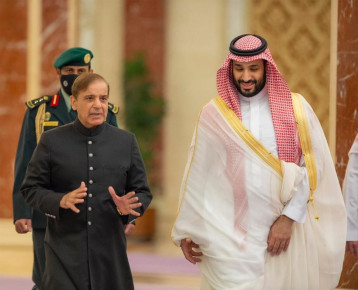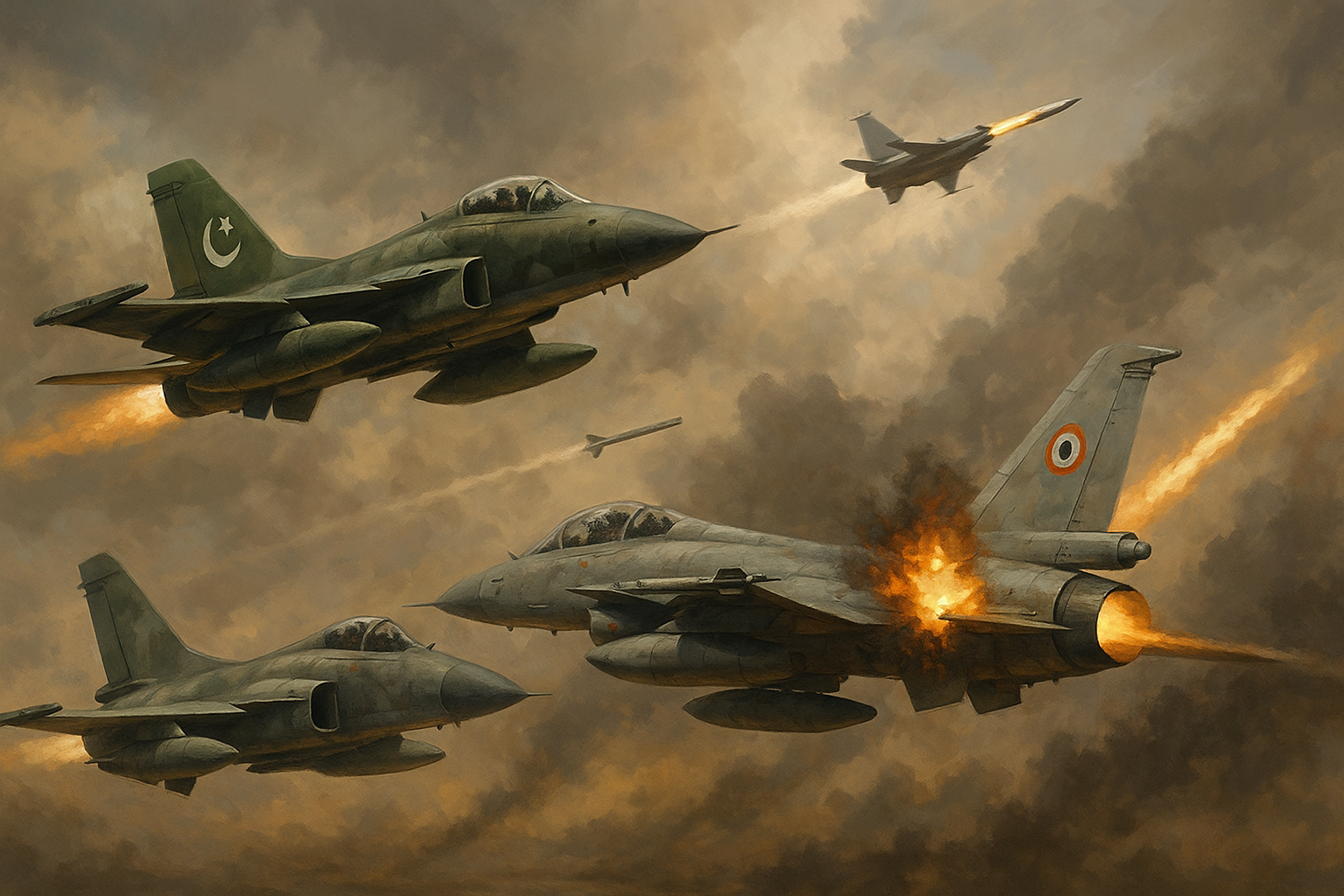Khurram Khan
Signing of Strategic Mutual Defence Agreement (SMDA) between Pakistan and Kingdom of Saudi Arabia is yet another and seemingly a far reaching and important milestone. The ‘defence pact’ has created euphoria in Pakistan and is seen as coming together with the Ummah against forces adversarial to Muslims. Pakistani Ministers hinted at the possibility of including other Muslim countries in similar defence agreements.
SMDA was inked on September 17, 2025, at Al Yamamah Palace in Riyadh, by Saudi Crown Prince Mohammed bin Salman and Pakistani Prime Minister Shehbaz Sharif. The agreement is aimed at strengthening defence cooperation between the two countries by committing both to treat any act of aggression against one as an act of aggression against both, “establishing a framework for collective defence and enhanced military cooperation”.
Bilateral cooperation between Pakistan and Saudi Arabia dates to 1951 by signing Treaty of Friendship. Later, the defence cooperation was formalised in the late 1960s by training of military personnel and exchange of advisers. Defence cooperation between the two countries went a step further in the aftermath of the Soviet invasion of Afghanistan (1979) and Iranian revolution (1978-79) and signed 1982 Protocol Agreement that allowed Pakistani troops to train and deploy in Saudi Arabia. SMDA expanded the protocol in 1982 by introducing new provisions of Collective Security, Enhanced Cooperation and Focus on Deterrence.
The pact was in the works for some years, but it could not have come at a better opportune moment on the heels of the Indian aggression against Pakistan and Israel’s belligerence and intimidation of all and sundry Arab countries including Lebanon, Syria, Iran, Yemen and Qatar since the start of war in Gaza. It provided perfect cart blanche to both the countries to justify the agreement in the obtaining situation.
Joint defence in case of military aggression against one country has given rise to the speculations of a NATO-like alliance of Muslim countries. No less a person than Ishaq Dar, Foreign Minister and Deputy Prime Minister of Pakistan disclosed that several Arab and non-Arab Islamic nations have expressed interest in joining. NATO came into being after WWII as a bulwark against potential Soviet attack against Western Europe. The United States had underwritten the security of Western Europe and continues to do so.
Muslim countries individually and collectively do not have the wherewithal to emulate the US. They still have to go a long way to achieve comparable economic and military supremacy even as a bloc.
The pact will boost enhanced defence cooperation between the two countries. In addition to joint military exercises, intelligence sharing, stationing of Pakistani troops in Saudi Arabia and establishing integrated command-and-control systems that indicate joint command structure. The aim of the pact is to focus on “joint deterrence against any aggression”, without specific the threat. The pact supports “Saudi Arabia’s Vision 2030 economic diversification by ensuring a stable security environment”.
Surprisingly the international reaction to SMDA has been rather muted. Only four countries issued official statements. India, naturally alarmed over the development described it as a “matter of concern” that could encourage Pakistan in the context of its allegations against Pakistan in cross border terrorism. India stated that it was “closely monitoring developments” and emphasised that its strong bilateral relationship with KSA remains unaffected.
The Iranian President while addressing UNGA welcomed SMDA and termed it as a step towards a collective security system in the Middle East. The Iranian Foreign Minister later qualified that statement with a caution that the pact does not target Iran. Qatari government welcomed the pact for enhancing GCC security.
Matthew Miller, U.S. State Department spokesperson in a briefing, commenting on SMDA expressed “concern” over nuclear implications, stating it “raises questions about proliferation risks” and urging both the countries to adhere to international non-proliferation norms. President Donald Trump reportedly commented informally that it signals “Gulf states hedging bets,” tying it to recent U.S. arms deals worth $142 billion with Saudi Arabia.
International media and think tanks too covered it as one short story. Around 12 international publications or think tanks have commented on or analyzed SMDA. While 10 Indian publications and electronic media commented on the pact. U.S./Western media sees it as seeking security guarantees in a post US centric order. It has also raised nuclear proliferation concerns. In the Gulf Region. Saudi Arabia terms it as ensuring general stability for Vision 2030; GCC countries view it to consolidate security in the post-Qatar environment. Iran downplays the pact, focusing on détente with KSA; and Israel views it as Sunni pushback. Indian media contextualises it with the terrorist threat in IIOJ&K. Generally neutral observers characterise the pact as “more symbolic than revolutionary, upgrading existing ties without immediate operational changes”.
The pact brings windfall economic and diplomatic benefits to Pakistan. It gets investments in defence production and reclaims lost ground in the Gulf to India. It secures Saudi pledge of rollover of over 6 billion US dollars loan/deposits; employment opportunities for youth; and enhanced stature in Muslim world. However, it carries the risk of getting drawn in Middle Eastern conflicts and nuclear posturing calling for international scrutiny.
Meanwhile A Saudi business delegation led by Prince Mansour bin Mohammad Al Saud, Chairman of the Saudi-Pakistan Joint Business Council, arrived in Islamabad to discuss trade, investment, and cooperation. The visit follows Pakistan’s formation of an 18-member committee to manage bilateral economic ties and last month’s mutual defence pact. According to the Foreign Office, the delegation will meet Pakistani leaders, officials, and business groups to explore ways to boost trade and investment.
Saudi Arabia will accrue benefits of access to the Pakistan military prowess, and diversification of the economy from dependence on oil. It is being opined by commentators that the pact shifts reliance of Saudi Arabia from the US and wards off the threat of Iran, Houthis and Israel. It is not plausible for Saudi Arabia to come out of the US orbit for the foreseeable future. It would be no surprise that US focus shifting to Indo-Pacific region, it may have tacitly agreed to allow both Saudi Arabia to hedge its security bet in the military of Pakistan that has been tested time and against except in 2015 when it refused to send troops to Saudi Arabia against the Houthis threat.
Tailpiece: Some quarters, especially those who attached high but skewed hopes from this agreement, are of the view that the recently signed defence agreement fell short of meeting Pakistan’s expectations following the October 11 border incident, when Afghanistan targeted Pakistani posts across the Durand Line. Rather than taking sides, Saudi Arabia urged both countries to show restraint and resolve their differences through dialogue. The development highlights that the SMDA primarily reflects Pakistan’s effort to strengthen its strategic position after tensions with India, while Saudi Arabia secured Pakistan’s renewed commitment for future military cooperation, which had not materialized in 2015.
The author is former Joint Director General, Intelligence Bureau.



